Tripadvisor’s traveller forums can reveal what members who ask for, or give, advice know or don’t know about Tenerife. And so it was with a question about where to find authentic food on the island.
Most responses involved specific suggestions covering a handful of restaurants. That might make it sound to anyone who didn’t know the island finding authentic food on Tenerife isn’t as easy as it actually is. It’s falling-off-a-log easy. The responses made us ponder a couple of things. The first was something we take for granted – there are very good Canarian restaurants in abundance. Yet it might not be something that a significant amount of visitors know, depending on where they spend their holidays. The second was something we hadn’t considered before – maybe some people have eaten authentic Canarian food but haven’t realised it for the simple reason they don’t know what Canarian cuisine should consist of.
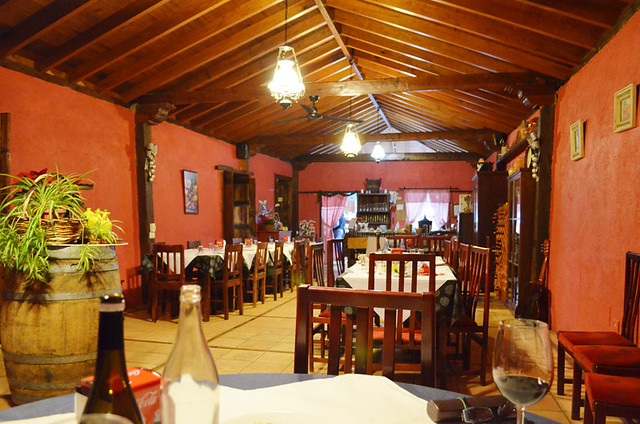
Where to find authentic, family run Canarian restaurants
Answer – everywhere outside of purpose-built resorts. Tenerife is littered with good Canarian restaurants. We’ve written many times that eating out is a big part of Canarian culture. With a population that hovers around the one million mark there’s an awful lot of restaurants outside non-traditional resorts that exist first and foremost for a local population. Take a drive along Tenerife’s older roads and you can find yourself falling over Canarian restaurants. More so in the north of the island than in the south for one simple reason – the majority of Canarios live in the north. When you drive along roads that link the hill towns of the south and then drive along their equivalent in the north you don’t have to be particularly astute to spot the differences between them due to the volume of people who live there. For example, there are far, far more restaurants along our Here Be Dragos driving route in the north than there are on the equivalent Forgotten Road route in the south.
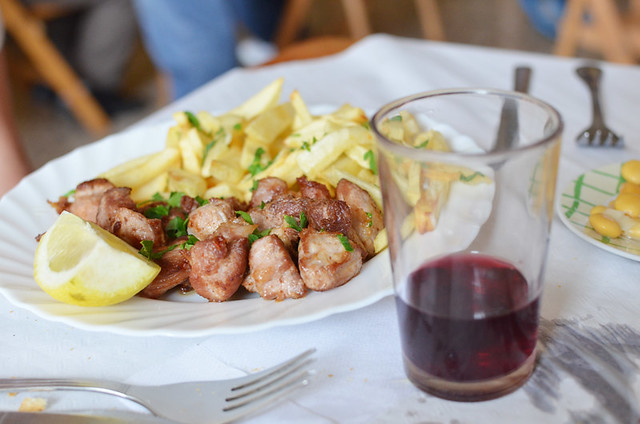
There are whole areas between Los Realejos and the capital, Santa Cruz, which are especially renowned for their gastronomy – where streets are filled with superb restaurants you never see mentioned in the English language pages of Tripadvisor. They’re not pretty areas and there are no tourist attractions to draw in visitors, which is why they remain off the radar of the all but the most inquisitive visitors. But you don’t have to know specifically about these, or to travel to the north, to stumble across good authentic restaurants. These are found all over, not just in pockets. Explore, take a chance. That’s what we do.
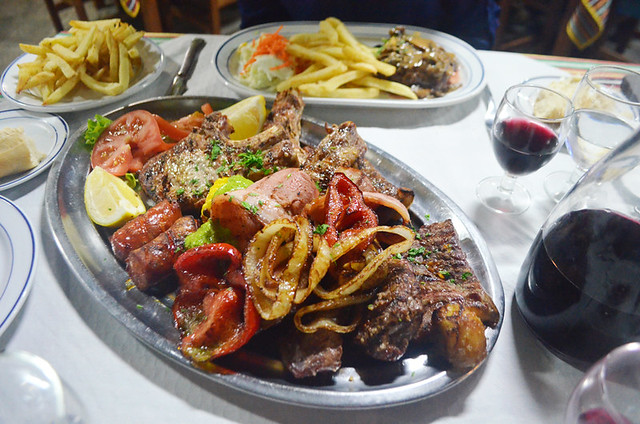
However, first you have to know how to identify what is an authentic Canarian restaurant.
What is authentic Canarian cuisine?
It’s important to know the specialities of any destination’s cuisine to know when you’re eating authentic local food. In many ways the most basic Canarian food isn’t a great deal different from many other destinations around Europe. Canarian menus tend to consist of simply grilled meat, fish or seafood (on the coast especially) served with potatoes or chips. We’ve seen similar offerings in a variety of countries. Basically, someone could easily sit down to a plate of pork chops with fries and they’d be eating authentic Canarian cuisine. On the other hand, there a few dishes which do have ‘made in the Canaries’ stamped all over them.
Here are some examples of the sort of dishes commonly seen on menus.
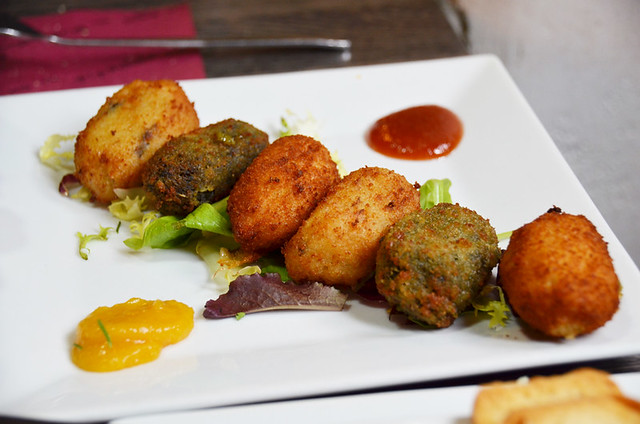
Starters
Some common starters will be familiar to people who have eaten in restaurants on the Spanish mainland – pimientos de Padrón, jamón iberico, croquetas, papas bravas, boquerones, ensaladilla Rusa, gambas al ajillo etc. Others are distinctly Canarian. These include rancho Canario, potaje de berros, queso asado con mojos, almogrote, escaldón de gofio, ropa vieja, carne fiesta, garbanzos compuestos, and papas arrugadas.
Egg dishes also feature regularly and could either be starters or mains as some can be hearty affairs. Everyone knows tortilla española but also look out for revueltos (scrambled eggs with other ingredients), huevos estrellados (egg and chips, which comes in a few guises) and arroz a la Cubano (less common).
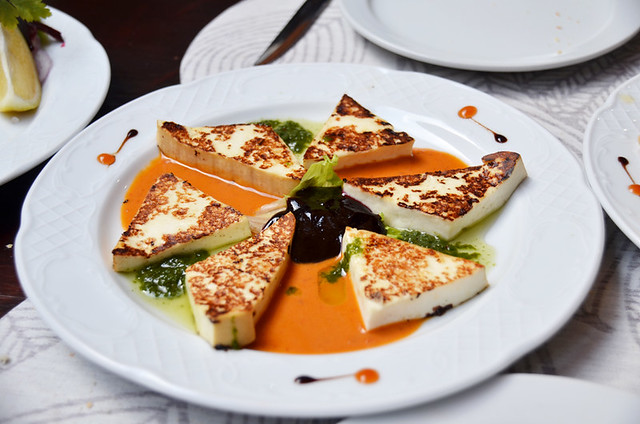
Meat
If anyone heads straight to the meat part of the menu and orders steak, or chops of any kind etc. then they aren’t going to notice much difference in what arrives on their plate than if they’d ordered similar in any other European destination. This doesn’t mean it’s not authentic, but neither does it mean it is. The dishes which show you’re looking at an authentic Canarian menu include cabra (goat), conejo (rabbit), cochino negro (black pig), costillas con papas y millo (a messy concoction of corn on the cob, pork ribs and potatoes), and puchero (another messy concoction featuring everything but the kitchen sink). With the last you can’t always just choose it from a menu. Some places only prepare it on certain days, whereas with some other restaurants diners have to order it in advance.
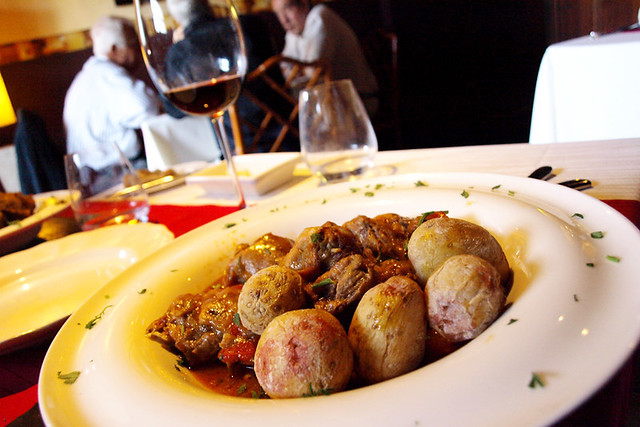
Fish and seafood
What’s on the fish and seafood section of menus can be more of a giveaway. If the fish selection includes vieja, cherne, bacalao encebollada, atún en adobo, and various types of bream with differing Canarian names, then the chances are it’s an authentic Canarian restaurant. If it has moreno frito, you’re definitely in a Canarian place. As far as seafood goes, lapas is a very good indicator as is choco, pulpo, and squid in various formats (calamari, chopitos, chipirones).
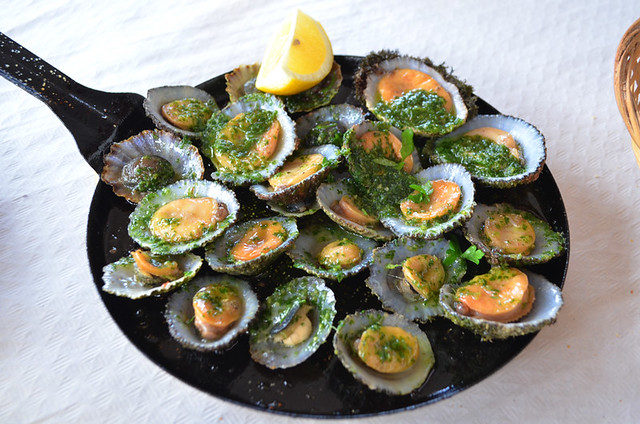
Desserts
Not the strong point of old-school authentic Canarian cuisine in our book. Lots of traditional restaurants have unappetising, wobbly, preprepared desserts in those old fashioned glass dessert dishes. But Canarian puds to look out for include bienmesabe, frangollo, prince Albert, gofio mousse, leche asada, and quesadilla.
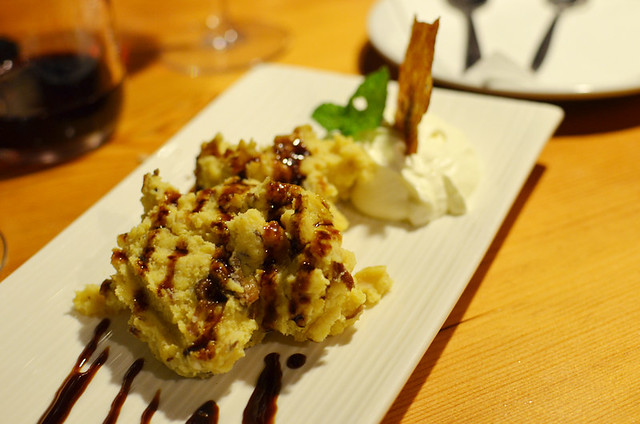
The dishes mentioned don’t cover all those to be found on Canarian menus, they’re simply illustrative and cover a broad range in order to help give anyone unfamiliar with the local gastronomy a better idea what to look for.
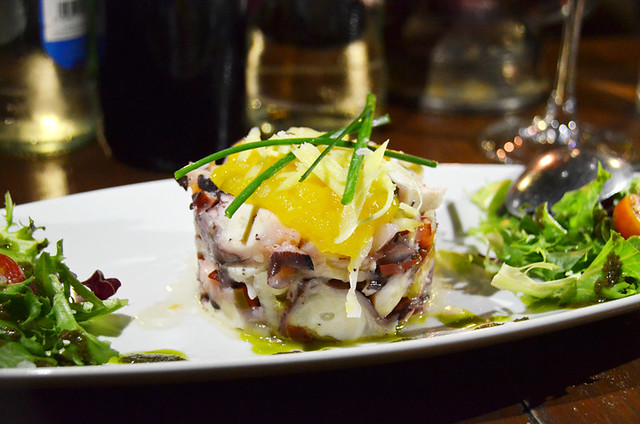
Finally, menus don’t have to just feature basic food to be authentic. Tenerife is increasingly known for its new breed of young chefs who have breathed new life into traditional recipes, re-interpreting them for more sophisticated and adventurous palates. There are many family run Canarian restaurants which use traditional ingredients in more creative ways. But even with these, the secret to identifying which are truly ‘authentic’ ones still lies in knowing what dishes to look for, i.e. variations of some of the ones mentioned above.




Be the first to comment